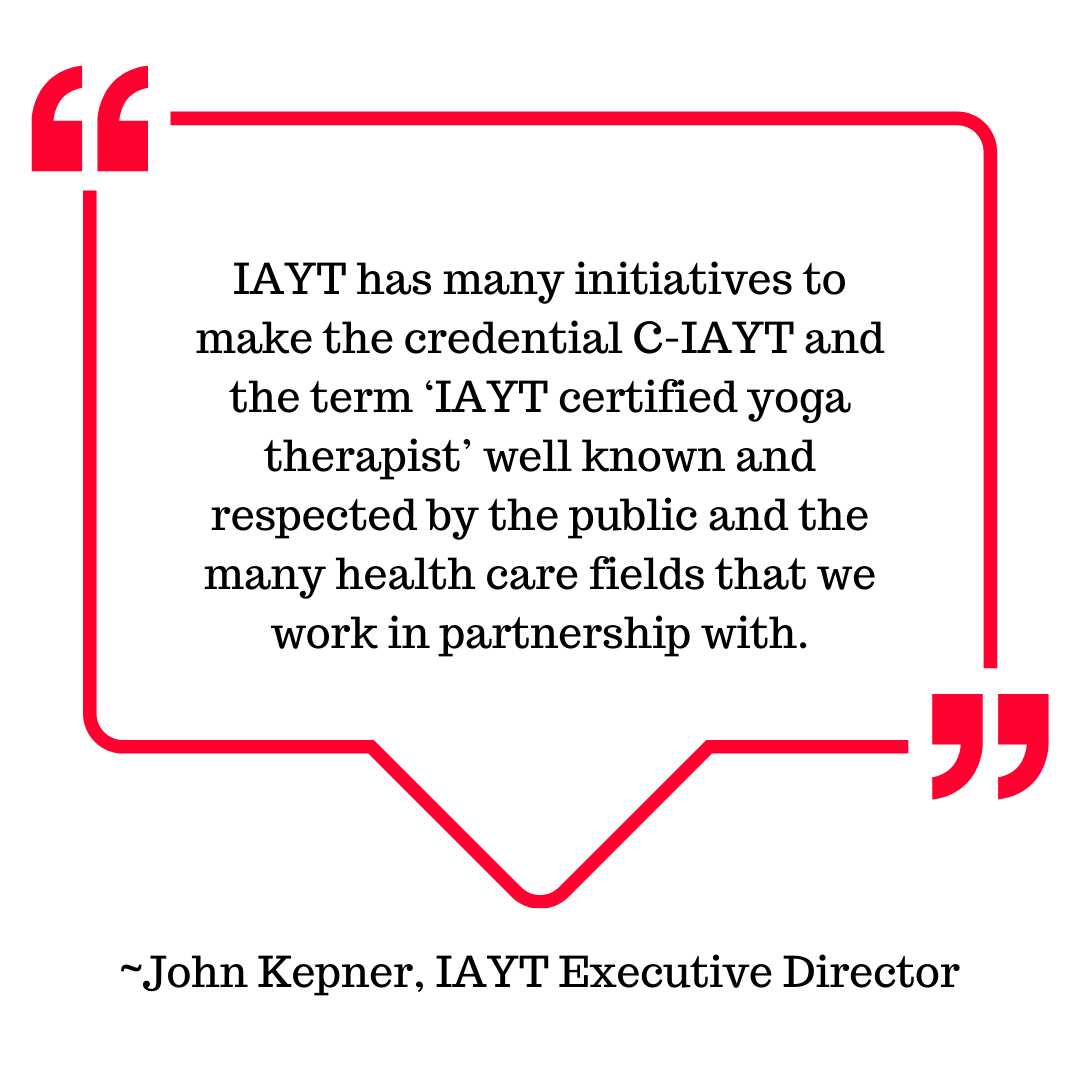How to Become a Certified Yoga Therapist Now
Is Yoga Therapy a Profession?
If yoga is a significant part of your life, you’re surely acquainted with its therapeutic benefits to body, mind, and life. With all the well-known benefits, it may be surprising to know that this hasn’t translated to prescriptions or insurance coverage for yoga as a therapeutic modality. But there are signs that we may be heading this way. The nonprofit International Association of Yoga Therapists (IAYT), established in 1989, is on a mission to establish yoga as a respected therapy recognized by the health care profession.
How Is Yoga Therapy Becoming Professionalized?
To spearhead this mission, the IAYT
developed Educational Standards for the Training of Yoga Therapists in 2012,
started an accreditation process for yoga therapy programs in 2014,
launched a professional yoga therapy certification program with the C-IAYT credential in 2016,
published a Code of Ethics and Professional Responsibility, and a Scope of Practice,
accredited more than 60 yoga therapy programs, and
certified over 3,900 yoga therapists.
How To Become a Certified Yoga Therapist?
Now there are two pathways to IAYT yoga therapy certification—
graduation from an accredited yoga therapy program
AND
portfolio review and evaluation.
If you’ve been practicing yoga as a therapeutic modality helping others, your work and training may qualify you for the C-IAYT credential through portfolio review and evaluation. Here are the criteria for application—
at least 200 hours of yoga teacher training AND
at least 650 hours of yoga therapy education that started at least 5 years prior to date of application AND
minimum 20 hours of mentored practice as a yoga therapist-in-training and/or yoga therapist AND
minimum 200 hours of practice (with clients and/or as a faculty member) over the past 2 years AND
minimum 400 additional hours of client contact practice as a yoga therapist.
Which Path Is For You?
Per IAYT, the portfolio review and evaluation is intended to facilitate certification for yoga therapists who
are actively practicing as a yoga therapist,
have significant yoga therapy education and extensive yoga therapy practice experience, and
are not candidates for an accredited program, and qualify under a rigorous system for certification.
This doesn’t mean that if you are currently enrolled in a yoga therapy program you may not apply through PR&E. The IAYT does not intend to take people off a course they might already be committed to, but you may have enrolled in a program before knowing that there’s another way to get certified. And, yes, the PR&E pathway is open to you if you’ve been practicing yoga therapy without a certification. That’s what “actively practicing as a yoga therapist” means. We asked IAYT ourselves just to be sure. You can ask them too if you’re interested or have questions. Consider for yourself whether this new pathway may fit your experience and your goals.
The initial PR&E is a pilot project open through April 2020.
The IAYT will close for new applications while the process is reviewed with an expected re-opening of a refined PR&E process. The concurrent development of an IAYT Certification Exam is expected to be complete in 2021, and will be part of the final PR&E process. Even if you don’t quite meet the qualifications, now there is a clearer and wider path to the C-IAYT credential.

